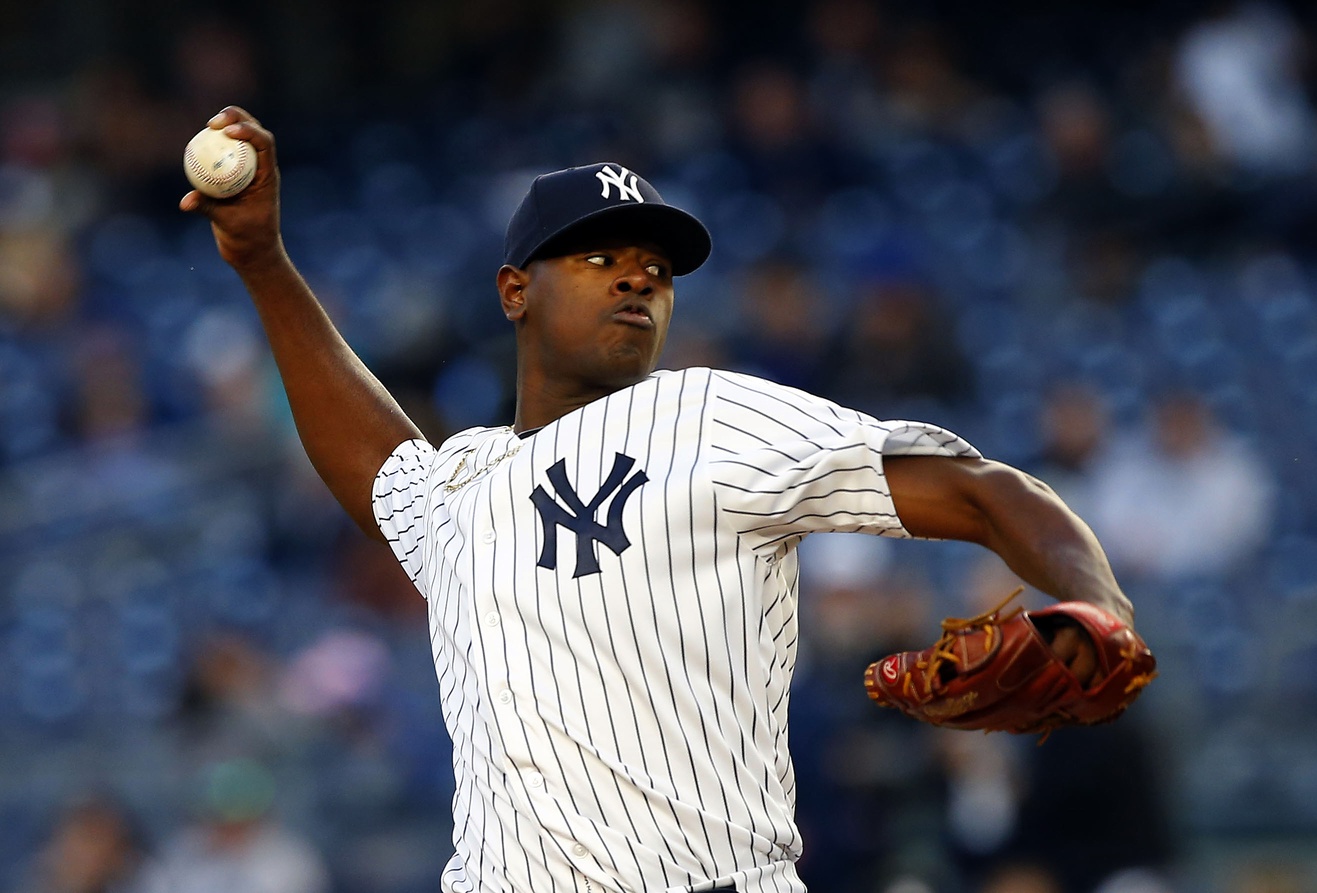Fact No. 1: Luis Severino is incredibly tough to hit.
Out of the eight stops in which Severino has pitched at least 20 innings in his professional career, he has allowed more than a hit per inning in exactly zero of those. Severino also has more career strikeouts than innings pitched in the minor leagues and owns a fastball that averages north of 95 mph. In other words, Luis Severino is probably not too easy to hit.
Fact No. 2: Luis Severino has looked pretty easy to hit through his first two starts this season.
Severino has allowed an incredible 18 hits through his first 10 2/3 innings in 2016, which equates to a .383 batting average against. Some of that can be attributed to a wild .436 BABIP, and the rest can be attributed to the extremely small sample size. However, some pitchers don’t allow 18 hits in a two start stretch over the course of an entire season, and by the eye test, Severino has looked much more hittable than he should be, especially given his stuff.
Severino should consider making an addition to his repertoire. This isn’t an overreaction to a two start sample, but rather a general observation that holds true anyways and is only more relevant now because of his recent struggles. At the moment, Severino’s slowest pitch is his changeup, which has averaged 88.0 mph in his major league career so far. That average changeup velocity has actually gone up this season to a ludicrous 88.7 mph. Now, there isn’t anything inherently wrong with such a small separation between fastball and changeup. In fact, Felix Hernandez and Zack Greinke are notorious for having minuscule velocity gaps between their heater and their changeup, and both pitchers are incredibly successful Major Leaguers in their own right. However, both of them also possess slower pitches in their repertoire, such as their curveball. Just how crazy is it that Severino’s changeup, his slowest pitch, averages 88.7 mph? Here is the list of qualified pitchers last season that even had a slowest pitch of theirs average over 83 mph.
| Name | Slowest pitch average velocity | Slowest pitch type |
|---|---|---|
| Tyson Ross | 86.6 mph | Slider |
| Chris Archer | 85.7 mph | Changeup |
| Carlos Martinez | 85.1 mph | Curveball |
| Jeff Samardzija | 85.0 mph | Splitter |
| Yordano Ventura | 84.0 mph | Curveball |
| Matt Harvey | 83.6 mph | Curveball |
| Carlos Carrasco | 83.2 mph | Curveball |
Well, Severino beats everyone by over two mph, and he beats everyone besides Tyson Ross by at least three mph. That’s right, there were only seven qualified pitchers last season that didn’t have a pitch that averaged less than 83 mph. Now, the first objection to this would be that, “hey, all of the pitchers on this list are pretty good, and some of them are elite!” That would absolutely be true, but it probably has more to do with the fact that all of them just throw harder in general than the average pitcher, and happen to have nastier stuff. And with the exception of Tyson Ross, all of these pitchers have a velocity separation of around 10 mph between their fastball and their slowest offspeed pitch; Severino’s is 6.5 mph.
At the end of the day, the pitcher’s goal is to deceive the batter, and a primary way in doing so is to throw off the batter’s timing. However, Severino can’t really do that with his current repertoire. Hitters with swing paths that stay through the zone a long time have a solid chance of making contact with any pitch within a 6.5 mph velocity band. Severino then has to resort to movement to get his whiffs or weak contact. Holding all other things equal, a bigger velocity separation will help both the fastball and the offspeed pitch play up.
Looking at the table, an interesting thing to note is that the pitchers have different pitches they use as their slowest offering. The most common one is the curve, but other pitchers also use a slider, changeup, and splitter as their respective slowest offerings. What does this mean, relative to Luis Severino? The first thing Severino can do to broaden the velocity band of his repertoire is to toy with the grip of his changeup in order to slow it down. However, this probably isn’t a good idea because his changeup is already considered such an effective pitch. Severino can also slow down his slider or add a slower variation of the pitch. This is something that Marcus Stroman does; Stroman throws one breaking ball and varies the velocity and break, using it as a cutter, slider, or curve when needed. A slower version of Severino’s slider could lead to greater two-plane depth. The third option would be to add another pitch to his repertoire, such as a curveball. A prime example of this can be seen with Max Scherzer, who had a repertoire early in his career that was very similar to what Severino possesses right now. Scherzer came up through the minor leagues with a fastball/slider/changeup combo, but he added a curve during the 2012-13 offseason. Here are Scherzer’s stats, pre- and post-curveball:
Scherzer, without curveball (2008-2012): 9.3 K/9, 3.0 BB/9, 1.1 HR/9, .250 BAA, 3.88 ERA, 3.72 FIP
Scherzer, with curveball (2013-present): 10.4 K/9, 2.1 BB/9, 0.9 HR/9, .212 BAA, 2.95 ERA, 2.82 FIP
Obviously, the entirety of Scherzer’s improvement can’t be credited to the addition of the curveball. Growth and maturation as a pitcher likely played an incredibly important role as well. However, it’s also inarguable that Scherzer has been a much different pitcher since the addition of the deuce, and Severino could do well to learn from it.
Lead photo: Noah K. Murray / USA Today Sports
